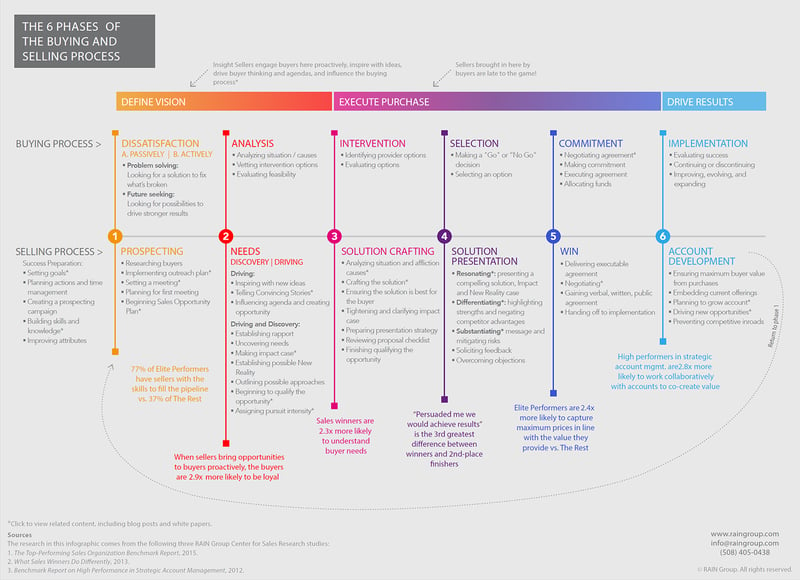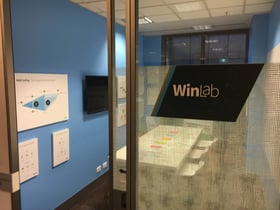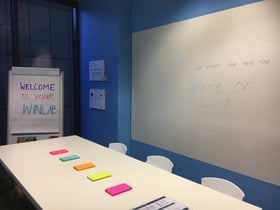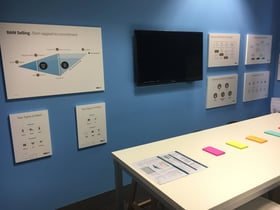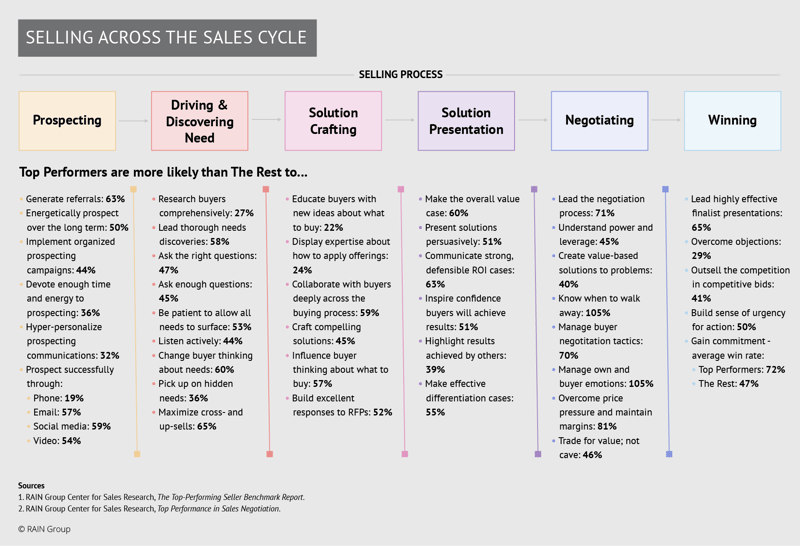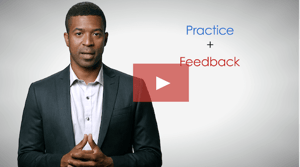Sales leaders with a finger on the pulse of B2B sales know that marked change is underway. Some changes have been spurred by the global pandemic, with others hastened by the uncertainty of the economy.
For their new report, Future of B2B Sales: The Big Reframe, authors at McKinsey & Company spoke to more than 50 heads of sales across a range of industries and geographies to better understand the shift in the B2B sales environment. They identified 5 key themes:
- Put the customer at the heart of growth
- Break the channel mindset
- Create a scalable sales engine
- Rethink the people strategy in an age of uncertainty
- Make the change stick
In this article, I share what you need to know about each and what you can do to make sure your sales organization is well-positioned to address each of these areas in the year ahead. Savvy sales leaders will capitalize on the shifts while at the same time optimizing their salesforce for top performance.
1. Put the customer at the heart of growth*
There are two major influences at work when it comes to putting your focus on buyers.
First, focus on the buying process.
Guide customers through the buying process, not the selling process. Too many sellers focus on their sales process, rather than the customer’s buying process. Top-Performing Sellers, however, think buying first and map their selling process to the process and psychology of buying. These sellers understand the process from the buyer’s perspective (dissatisfaction, analysis, intervention, selection, etc.).
Click to enlarge and view the full PDF.
For example, at RAIN Group we work with our clients to implement a sales opportunity planner with an emphasis on building client value. A key question the sales opportunity plan helps sellers answer is: what are the key elements of the specific value case for why this particular buyer should buy from you? This puts the buyer at the center and helps to create a tailored value proposition for each buyer, which leads to the next point.
Advancements in AI have created new methods for sellers to better manage their opportunities and build a value case that resonates with their buyers.
Second, deliver personalized content and tailored value propositions.
Buyers expect personalized content and tailored value propositions. We define a value proposition as the collection of reasons why a buyer buys. By definition, your value proposition is going to be unique to each buyer. The key is understanding what’s most important to that buyer and then tailoring your messaging, content, and solutions to meet those needs.
The collection of reasons why people buy tends to fall into three major areas: resonate, differentiate, and substantiate. In RAIN Group’s Top-Performing Seller research, we found Top Performers outperform The Rest in each area and they make the value case much more strongly.
- Resonate: Buyers have to want what you’re selling. Top Performers are 60% more likely than The Rest to present overall value cases compellingly and persuasively.
- Differentiate: Buyers see how you stand out from other available options. Top Performers are 55% more likely than The Rest to make the differentiation case for their offerings compellingly.
- Substantiate: Buyers must believe you can deliver on your promises. Top Performers are 51% more likely than The Rest to inspire confidence in buyers that they’ll achieve the desired results.
Only 18.7% of respondents in our research of more than 1,000 sellers and sales managers meet Top Performer status. This leaves a lot of room for improvement in most sales organizations.
2. Break the channel mindset*
B2B sales are no longer limited to a single channel or even a few channels.
According to other McKinsey research, B2B buyers often use more than nine channels in their buying process, including email, phone, web chats, virtual meetings, etc. And with the onset of Covid, we saw a massive shift to virtual selling.
Now that in-person is back, sellers and sales managers in our research show most selling is happening hybrid:
- 43% mostly hybrid
- 32% mostly remote/virtual
- 25% mostly in-person
Which statement best characterizes how your/your team’s selling currently occurs?

To meet buyers where they are, sellers need to move seamlessly among channels.
Top Performers excel at both remote and in-person selling. They’ve mastered virtual selling, including the technical aspects and virtual meeting management, and can effectively collaborate and build relationships in a digital environment.
They’re also able to handle the challenging demands of hybrid selling, such as managing meetings when some decision makers are attending in person and others are remote, leveraging technologies to enhance their selling and to share content with buyers, using video in the selling process, and so on.
Master Virtual Selling
Technical aspects:
- Quality camera and sound
- Lighting
- Background
- Professional personal appearance
Virtual meeting management:
- Building rapport virtually
- Managing engagement and collaboration
- Taking the lead and guiding the discussion
- Using visuals
- Reading virtual buyer cues
- Adapting core selling skills to the virtual space (needs discovery, solution crafting, presenting, etc.)
3. Create a scalable sales engine*
The McKinsey report identifies three tactics leading sales organizations employ to not only land big deals, but also to consistently win their most important deals.
Create cross-functional win rooms.*
At RAIN Group, we call these Win Labs and we’ve been teaching clients how to create and run them with great success for years.
Win Labbing is a rigorous process that takes a standardized approach using specific tools, job aids, and checklists to support thinking and ideation. It inspires the team to come up with unique ideas and strategies that delight the buyer and leaves the competition scratching their heads. The process results in a clearly defined action plan so sellers know what to do now, next, and for the rest of the sales process. Finally, Win Labbing is collaborative and can pull in people across functions to generate the best set of ideas.
It's a process that teams embrace. One of our clients has created a physical Win Lab room filled with tools to help people build creative strategies and win important sales. It’s one of the most booked rooms in their offices.
Ensure the correct tech-stack intensity.*
Interestingly, the McKinsey report calls out that leading organizations invest in a narrow set of tools they actually need and double down on the adoption of these tools. We’ve seen organizations layer technology upon technology in an effort to improve seller productivity. The thinking is that the next tool will be the one that really allows sellers to improve their efficiency and effectiveness.
However, lack of adoption and planning around how the tools will actually be used—and used together—leads to significant waste.
While there are heaps of sales technologies and articles about the sales tech stack, our view is that having the best ones (and the fewest possible) at the appropriate places and times (and only at the appropriate places and times) in the process consistently drives sales performance higher.
Rather than investing in the next great sales technology, first look at what you want to get done, then think about how you can enable sellers to do it most efficiently and where technology can help. Then invest your time and resources in getting sellers to adopt these technologies.
Expand commercial operations.*
Operations is the hub of sales organization efficiency. It’s responsible for how activities and outcomes are tracked, and how information is communicated to management for decision-making, all to maximize productivity.
McKinsey’s report shares,
“If companies want to operate at scale they need to broaden the role of commercial operations so it’s seen as a source of analytical and strategic value. Our research shows that companies that do this perform significantly better than those that maintain a simplified sales-operations function.”
This includes bringing together operations teams across sales, business operations, marketing, HR, finance, and product, and ensuring there’s an understanding of the company’s overall strategy.
4. Rethink the people strategy in an age of uncertainty*
With the great resignation and a shift in buyer expectations, it’s more important than ever to invest in developing seller capabilities. Without this, organizations risk having a salesforce unable to function in an evolving environment.
Rethink talent.*
Upskilling the sales force was cited as a top priority by 97% of sales leaders, according to McKinsey. And the majority of sales leaders surveyed (85%) believe solution selling will be a core sales capability going forward.
We know from our research and experience that to be proficient at solution selling, sharing insights, and collaborating with buyers, sellers need both breadth and depth in their skill set. The best sellers are more capable of selling across the sales cycle, including prospecting, driving and discovering needs, solution crafting, presenting solutions, negotiating, and winning deals. They’re also more capable of creating and communicating value for buyers (see point #1 above).
Click here to download the Selling Across the Sales Cycle PDF.
Moreover, our research found that sellers who excel in nine advanced consultative selling skills are 94% more likely to be Top Performers and achieve higher win rates on proposed sales.
This all points to the need for a cohesive approach to talent development through sales training and coaching so capabilities are built across the sales cycle.
Advanced Consultative Selling Skills
Sellers who excel with the following nine capabilities are nearly twice as likely to be Top Performers:
- Inspiring confidence and succeeding with executive-level buyers
- Inspiring buyers to reach out to me for ideas and advice
- Influencing buyer thinking about the solutions they need
- Educating buyers with new ideas and perspectives about what they should do or buy
- Making and communicating strong ROI and financial cases for buyers
- Finding and capitalizing on maximum cross-selling and up-selling opportunities
- Collaborating deeply with buyers throughout the buying process
- Developing buyer champions to advocate for us to help us win the sale
- Leading highly effective proposal and finalist presentations
Read more about the 9 advanced consultative selling skills. >>
Achieve value.
Value-driven sales organizations make value a priority, put customers at the center, and equip sellers to provide maximum value to buyers. As a result, these organizations are more likely to grow revenue, have higher win rates on proposed sales, and have lower turnover of top sellers.
According to McKinsey, “Our research shows that companies can boost the lifetime value of sellers by 10 percent by making the right hires, optimizing onboarding, building capabilities and retaining the right people.”
Forward-thinking organizations play an active role in achieving this value and growth trajectory when they invest in their salesforce. Our research shows sellers are 63% more likely to become Top Performers when they report having an effective sales manager, regular coaching, and effective sales training.
Impact of Manager + Coaching + Sales Training on Seller Performance

Rethink incentives.*
When thinking about incentives, think motivation. Certainly, financial compensation plays a role in motivating your sales team, but motivation extends far beyond financial incentives.
Indeed, personal effectiveness work habits have a significant influence on motivating sellers for performance. Each of nine productivity behaviors is positively correlated with top performance, according to RAIN Group’s recent research.
B2B sales organizations can boost sales team productivity and help sellers harness their motivation by providing sales enablement that has motivation baked in. In addition to delivering highly effective training for sellers, this means training sales managers so they’re effective, as well as providing ongoing coaching.
3 Daily Habits to Increase Sales Motivation
Through our productivity research, we’ve identified three productivity habits and a series of productivity hacks that, when applied consistently, inspire and strengthen motivation systematically across teams.
Habit 1: Recruit Drive: Motivation is a skill more than an innate attribute and it can be built over time with the right habits. To find your drive:
- Have written goals that are meaningful to you.
- Plan your actions to align with your goals.
- Track actions and progress towards your goals.
Progress towards goals is motivating. Sales managers can implement this simple system with their teams to boost motivation.
Habit 2: Ignite Your Proactivity: How individuals manage their time each day, talk to themselves, and stay focused has a great impact on motivation.
- Calendar your investment TIME; block it off in your calendar and stick to it!
- Practice positive self-talk.
- Begin immediately on your most important tasks (Say, “3, 2, 1…Go!”).
Habit 3: Reengineer Habits: When you understand your habits—both productive and unproductive ones—you can change them as you wish.
- Plan how to respond to habits you want to change (Say, “When I, Then I.” Ask, “Will I?”)
- Change your work environment to promote more productive habits.
- Have a productive morning routine.
Learn more about these motivational factors in our research report. >>
Controlling your day and time, employing productive habits, and focusing on your goals is all motivating. Create a highly motivated and focused sales team with the 9 Habits of Extreme Productivity training.
5. Make the change stick*
At RAIN Group, we like to say we’re in the business of behavior change—training and consulting are the vehicles.
For transformation to happen, behaviors need to change.*
The truth is sales training fails to deliver long-term business results more often than it succeeds. Our research shows that only 18% of sales organizations rate their training as effective. Yet, at the same time, we know Top Performers get highly effective training and it’s having an outsize impact on performance.
The problem is most training doesn’t change sellers’ behaviors. New skills aren’t retained. Methods aren’t adopted. Approaches aren’t applied. Results don’t happen.
What do you need to do to make behavior change stick?
At RAIN Group, we take a unique approach to driving behavior change through training based on three key pillars:
- Craft the change strategy and metrics. Think first about the business metrics you want to drive, and then develop a change strategy to get you there. This includes executive alignment, communication, and a clear path. Only then can you align the training curriculum, cohorts, and programs to drive desired change around your specific objectives.
- Deliver world-class training. Today’s modern learners need training that’s practical, interactive, and impactful. They need training they can use immediately. To meet these demands, provide training that’s modular, multi-modal, and purpose-built for adult learners. Training should be a transformational experience that includes practice, feedback, and application to real-world sales situations.
- Enable results with ongoing coaching and measurement. You need to enable sellers through action-oriented coaching that provides ongoing feedback and holds them accountable to applying new skills over the long-term and executing at high levels. And you need a measurement process to track and report the results.
By using the Craft, Deliver, and Enable framework you can implement training that drives business results and true sales transformation, leading to change that sticks.
Download The Complete Guide to Sales Training Success to learn more. >>
In Summary
Take a proactive role to ensure your organization is prepared for the changing sales landscape:
- Put the customer at the heart of growth
- Break the channel mindset
- Create a scalable sales engine
- Rethink the people strategy
- Make the change stick
Invest in your salesforce to foster an environment of top performance and you’ll reap the rewards.
*"Future of B2B Sales: The Big Reframe." McKinsey & Company, n.d.






